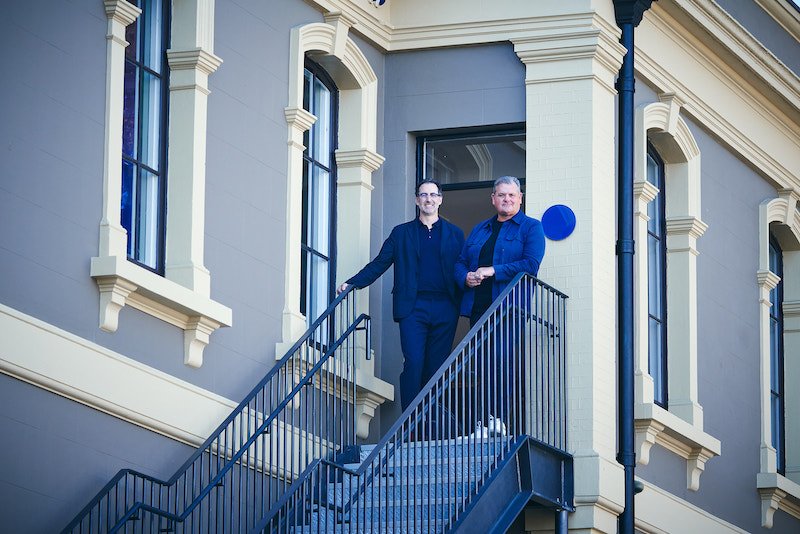2025 trend: Advertising jingles
These singalong superstars stick in your head and just won’t quit. Advertising jingles are a shortcut to brand identity, and we’re forecasting a lot more of them in 2025. Happy New Earworm.
When I think of advertising jingles, I immediately think of Tony’s Tyre Service. It has everything a jingle needs. It is catchy and no matter how many years go by, it is stuck in my head. But do jingles still have a purpose?
Adverts are broken up into two things. They are 50% visual and 50% audio.
It’s tempting to think visual is the more significant half of the equation. But you can see something one day
and forget it tomorrow. Jingles are earworms you can’t get out of your head.
Close your eyes and think of your favourite jingle. Do you know the lyrics off by heart? Thought so.
Tux’s jingle making a comeback
For its 70th birthday in 2024, dog food brand Tux decided to revive and reinvent its iconic jingle from the 90s, written by the legendary Murray Grindley.
Jamie Hitchcock and Martin Yeoman of The Enthusiasts, creative agency for Tux, know the power of audio. They say it’s vital for storytelling as it can evoke emotion and even a dopamine rush.
Yeoman says that for example, Whittaker’s doesn’t have a traditional jingle with lyrics. But the ambient
music is the brand’s calling card that makes people immediately put two and two together.
“Music is hugely powerful. When you think about great communication is about eliciting an emotion, nothing does that faster than a track. Particularly if it’s something that you know and brings all those associations with it,” he says.
“It may be only for a short period for a campaign. But if you want to get someone to feel joy, sadness, rage or whatever it might be, music’s a really fast way to get you there.
“Music triggers a dopamine rush and that’s what any great comms actually does. It actually makes you feel something.
“The faster you can do that or the more intense, why wouldn’t you try and integrate that into your communication?”

Music says what words can’t
And when it comes to music, you’re not asking for much from the viewer. For consumers, it actually is a pleasure to listen than read or comprehend a line of text.
What made Tux dive back into using a 30-year-old jingle was threefold:
It worked previously, nostalgia sells and Tux owns it.
Having your own jingle makes it easier to use and reuse, because it was written for the product.
There are also a lot of creative opportunities that can come out reusing your own asset.
Hitchcock says that using the jingle in TV spots supported the storytelling, but it does double duty:
Those who don’t have their eyes on the screen will be able to hear the advert is for Tux.
Once people hear the jingle, it becomes an earworm, he adds.
To make it work even harder, The Enthusiasts decided to put the jingle on OOH. So, when people drive past it and read the billboard, the song is immediately in their head.
When audio and video are 50/50, a jingle like Tux’s can make up 100% of your ad.
With the ad, Tux and The Enthusiasts were able to bag the Kantar Ad Impact Award for July. The research company says the advert resonated well with Kiwis.
A catchy and successful jingle drives brand awareness up immediately.
Think McDonald’s and its “ba da ba ba ba” (which was a song meant for Justin Timberlake). And Pizza Hut’s “0800-83-83-83”. These jingles immediately got you thinking of the brand.
When is a jingle not a jingle?
But jingles don’t have to be created in-house.
KFC’s iconic theme song is actually a track called X Gon’ Give It To Ya by American rapper DMX.
Using an already popular single can help draw more eyes to a brand’s campaign. It brings an established fanbase for the song or artist.
Recently, creative agency TBWA\ worked across The Warehouse’s latest campaign. It opted for a different approach: a rework of Mambo No 5 by Lou Bega.
“The Warehouse wanted a moment to remind all New Zealanders that they are the ultimate one-stop shop – to bring the optimism and the scale of what they offer to front of mind of all New Zealanders.
“We needed the comms to land fast, have cut-through and also, be super fun.
Jingle that sticks
“Mambo No 5 was a massively popular track in New Zealand that sat at the top of the charts for months,” says Catherine Harris, CEO of TBWA\Group New Zealand.
“It was the ideal choice, because it is so well loved. We could adapt the lyrics. It’s optimistic, energetic and has the pace to allow the massive range of Warehouse products and experiences to be sung about.
“It’s also highly memorable. It creates a fresh narrative that reminds New Zealanders that they can find ‘a little bit of’ everything at The Warehouse.”
Now The Warehouse has a bespoke jingle that, according to TBWA\, will be used again across communications, especially in performance work.
“Music and audio overall are very powerful for brands. And there are a load of benefits for a wide range of choices. We use custom-composed tracks, popular tracks, jingles and audio logos in all sorts of ways across a wide range of client partners and comms,” adds Harris.
“We look at the job to be done. Music plays the role the creative idea and the brand needs it to.”
In a musically driven society, now more than ever music is important to use in creative work. Whether that is
an in-house 15-second jingle or a popular song.
In a content economy, music drives the campaign home.
This story was published in NZ Marketing magazine issue 81, December-January 2024/2025.
Read more stories from issue 81.






